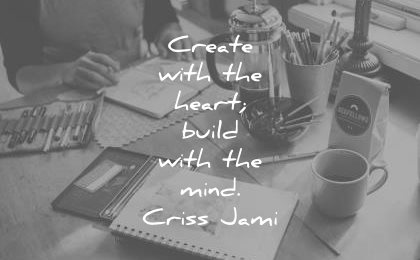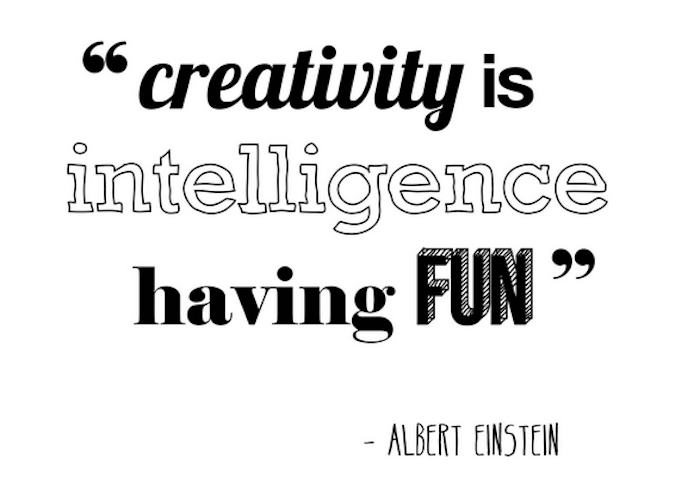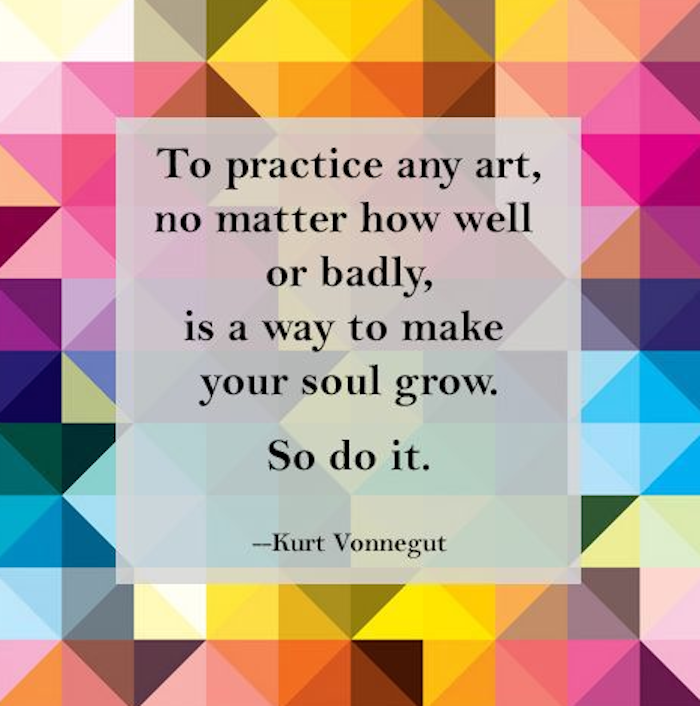Elizabeth Gilbert muses on the impossible things we expect from artists and geniuses — and shares the radical idea that, instead of the rare person “being” a genius, all of us “have” a genius. It’s a funny, personal and surprisingly moving talk.

 Creativity [originality, ingenuity]: Thinking of novel and productive ways to conceptualize and do things; includes artistic achievement but is not limited to it. Personified for example by Albert Einstein (Source: VIA Institue)
Creativity [originality, ingenuity]: Thinking of novel and productive ways to conceptualize and do things; includes artistic achievement but is not limited to it. Personified for example by Albert Einstein (Source: VIA Institue)
There are two essential components to Creativity- originality and adaptiveness. A creative individual generates ideas or behaviors that are novel or unusual and these make a positive contribution to the individual’s life or the lives of others. Learn more at Via Institute on Character
The Noel Strengths Academy defines it this way:
A creative person is someone who comes up with ideas that are (1) original and (2) useful
- Creativity includes artistic achievement, but is not limited to it
- People who are creative enjoy thinking of novel and productive ways to describe and do things
- There is “BIG C” Creativity / “little c” creativity
- “little c” creativity refers to day-to-day creativity
- “Big C” creativity is reserved for those who accomplish once-in-lifetime, creative acts
- “Big C” creators understand that truly original and useful creativity requires hard work
- “Big C” creators are usually (eventually) completers
- Sparks of ingenuity
Source: Noel Strengths Academy

Yes, strengths can be overused and underused
- Underuse: Conformity
- Overuse: Eccentricity
Key Research:
- Rank order of Creativity in populations from:
- US : 14;
- European: 12
- Asia: 15
- Latin America: 11
- Sub-Saharan Africa: 11
- Middle east: 11
- The character strengths least related to life satisfaction (weak association) are modesty/humility, creativity, appreciation of beauty & excellence, judgment, and love of learning (Park, Peterson, & Seligman, 2004).
- The most prevalent character strengths in very young children are love, kindness, creativity, curiosity, and humor (Park & Peterson, 2006a).
- Character strengths and character strengths-related person-job fit played a central role in work-related outcomes. Signature strengths fit and the character strengths of creativity and teamwork were the strongest predictors (Harzer et al., 2017).
- A study of strengths under the virtue of wisdom (creativity, curiosity, judgment, love of learning, and perspective) found them to be related to higher performance on a creative task and negatively related to stress (Avey et al., 2012).
Psychological Impact of Creativity
- Creativity is linked to problem-solving skills: Research has shown that individuals who score high on Creativity are better equipped to approach problems from unique angles and find innovative solutions (Finke et al., 1992).
- Creativity is associated with cognitive flexibility: People who are creative are more likely to be able to switch between different mental sets and adapt to new information, which can lead to novel insights and solutions (Duncan & McCann, 2007).
- Creativity is a key component of innovation: Studies have found that creative individuals are more likely to develop new products, services, and ideas that can drive innovation and growth (Amabile, 1988).
- Creativity is linked to emotional intelligence: Research has shown that individuals who are creative are more likely to be emotionally intelligent, which can help them navigate complex social situations and build strong relationships (Goleman, 1995).
- Creativity is associated with open-mindedness: People who are creative are more likely to be open to new ideas and perspectives, and are less likely to be closed-minded or dogmatic (Kashdan & Ciarrochi, 2013).
- Creativity is a key factor in personal growth: Research has found that engaging in creative activities can lead to increased self-awareness, self-acceptance, and self-improvement (Hennessey & Amabile, 1988).
- Creativity is linked to mental health: Studies have shown that engaging in creative activities can reduce stress, anxiety, and depression, and can even help to prevent mental health issues (Kashdan & Ciarrochi, 2013).
- Creativity is associated with social connections: Research has found that creative individuals are more likely to form and maintain strong social connections, and are better equipped to navigate complex social situations (Gilliland & Dunn, 2003).
- Creativity is a key component of flow experiences: Studies have found that creative activities can lead to flow experiences, which are characterized by complete absorption and engagement in an activity (Csikszentmihalyi, 1990).
- Creativity can be developed and strengthened: VIA’s research has shown that creativity can be developed and strengthened through practice, training, and experience, and that individuals can improve their creativity over time (VIA Institute on Character, 2015).
Put into action the recommendations from the Authentic Happiness Coaching Newsletter on Creativity
Tayyab Rashid and Afroze Anjum offer 340 Ways to Use VIA Character Strengths including these four for Creativity:
- Do at least one assignment weekly in a different and creative manner. If your assignments don’t leave much room for creativity, work on them in a new and different environment.
- Work on an article, essay, short story, poem, drawing, or painting in relation to your passion once a week. When you finish, look for a way to share your work with others who share your interest.
- Take a pottery, photography, stained glass, sculpture or painting class. If you have skills in one of these areas, consider teaching a class. 11. Learn about an exotic and creative art such as Feng-shui or Ikebana. Get advice on where to start from friends from different cultural backgrounds.
- Read about famous creative people and identify what made them unique. Think about the unique aspects of your own life and how you could channel them for creative purposes.

Learn more and here for Roger’s excellent website.
From Kirkus Reviews, 04/15/96:
Elizabeth Gilbert muses on the impossible things we expect from artists and geniuses — and shares the radical idea that, instead of the rare person “being” a genius, all of us “have” a genius. It’s a funny, personal and surprisingly moving talk.
Novelist Amy Tan digs deep into the creative process, looking for hints of how hers evolved. How do creative people come up with great ideas? Organizational psychologist Adam Grant studies “originals”: thinkers who dream up new ideas and take action to put them into the world. In this talk, learn three unexpected habits of originals — including embracing failure. “The greatest originals are the ones who fail the most, because they’re the ones who try the most,” Grant says. “You need a lot of bad ideas in order to get a few good ones.”
Sir Ken Robinson makes an entertaining and profoundly moving case for creating an education system that nurtures (rather than undermines) creativity.
More on meditation:
Quotations on creativity
Passion is one great force that unleashes creativity, because if you’re passionate about something, then you’re more willing to take risks. Yo-Yo Ma
|













